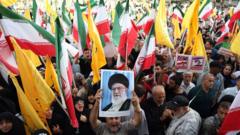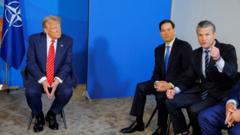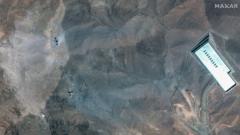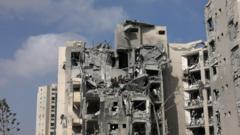The leaked Defense Intelligence Agency assessment indicates that US strikes on Iran's nuclear sites may only have temporarily hindered the program, as Tehran potentially relocated critical equipment. Intelligence operations will need to intensify in response to shifting dynamics.
Assessing the Impact of US Strikes on Iran's Nuclear Program
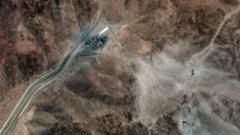
Assessing the Impact of US Strikes on Iran's Nuclear Program
A recent leaked US intelligence report raises questions about the effectiveness of military actions against Iran's nuclear facilities, suggesting recovery may be quicker than anticipated.
A top-secret Defense Intelligence Agency (DIA) report has surfaced, creating waves in the discourse surrounding the recent US military actions against Iran's nuclear facilities. The document highlights the delicate nature of intelligence gathering, particularly concerning a site as critical and clandestine as Fordo. This facility, once exposed by Western intelligence in 2009 for housing a secret nuclear operation, now faces scrutiny as analysts attempt to discern the degree of damage inflicted by US strikes.
According to the leaked assessment, the extensive core components of Iran's nuclear program remain largely intact, with preliminary findings conveying that the strikes have postponed Iran's ambitions by mere months rather than leading to long-term setbacks. Described by officials as a “low confidence” evaluation, the report reflects the challenges in acquiring accurate information, especially regarding facilities cleverly concealed from satellite surveillance and reconnaissance.
While the Pentagon's DIA possesses a robust capability in military intelligence, assessing the actual damage done to the subterranean structures is inherently complex. General Dan Caine, Chairman of the Joint Chiefs, noted that definitive assessments would take considerable time. Satellite imaging has thus far proven insufficient, revealing little about the internal impact of the strikes. Initial clues suggest that the Iranian defenses—constructed from reinforced materials—may have successfully shielded vital machinery from obliteration.
The centrifuges integral to uranium enrichment are reputedly delicate; the strikes likely induced disruptions in their operation. However, definitive evaluations will necessitate advanced intelligence-gathering methods. These could encompass seismic monitoring to accurately gauge underground disturbances, radiation detection to identify any leaks (which so far have been absent), and aerial LIDAR mapping for deeper insights into the facility's interiors.
Moreover, intercepting communications and gathering insights from informants will play a crucial role in verifying the status of the Iranian nuclear mission. Evidence indicates that even if sites like Fordo have been rendered temporarily inactive, this does not equate to a broader cessation of Iran's nuclear endeavors. Intelligence suggests that Iran has potentially relocated its highly enriched uranium stockpile, likely to different hidden locations.
Growing speculation points to another mountainous site nicknamed "pickaxe" as a possible new hub for Iran’s uranium activities. However, for any reconstitution to be effective, additional expertise is required—a significant barrier, particularly with the targeted elimination of key nuclear scientists by Israeli forces earlier in the conflict.
While the recent strikes may have created immediate disruptions, the ultimate impact on Iran's long-term nuclear strategy remains uncertain and is largely speculative. The complexities of intelligence operations in this context suggest that the scrutiny on Iran will intensify, and if evidence begins to surface indicating a recommitment to their nuclear ambitions, the region could face renewed tensions.







